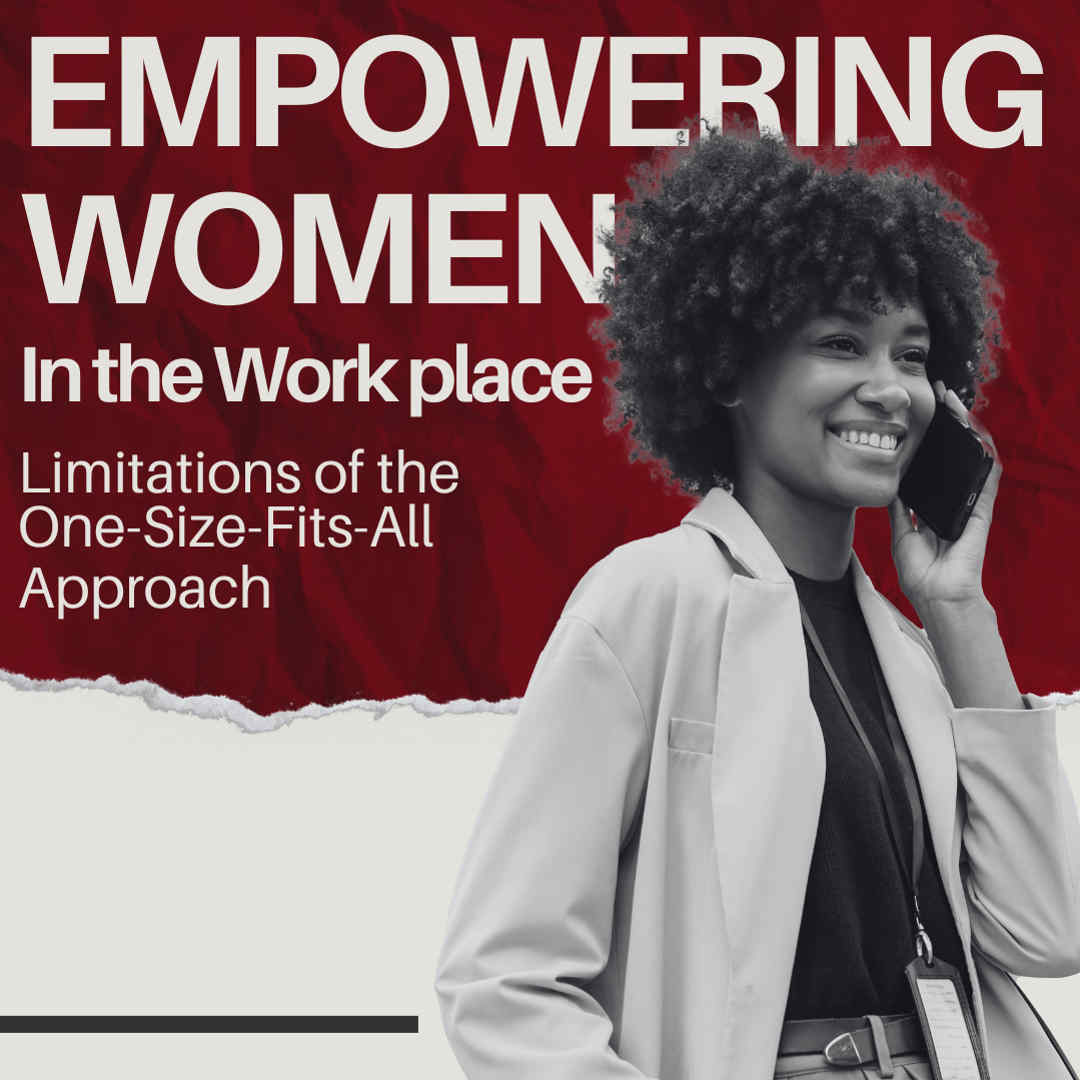CATEGORIES
#Inclusion and Impact #Women Empowerment #Work CultureOverview:
- The term ‘workspace’ may have different connotations, and need not be restricted to an “office-space”.
- A significant barrier for empowerment is the want for accommodation in spaces that are built to repel women.
- Empowerment by way of accommodation may look different for different jobs.
- Empowerment includes pushing for fair and unbiased pay, hygienic restrooms, or inclusive infrastructure such as paid menstrual leave.
People tend to picture a corporate office and suits with polished shoes when they hear “workplace”. But work takes different forms – from househelp to museum director, and everything in between and beyond. Most measures suggested on the internet for empowering women in the workplace are generally targeted to the corporate sector. Therefore, it makes sense that the measures might not have been helpful or applicable to other industries or workplaces. This article addresses workplaces that are structurally diverse and suggests feasible measures to empower women.
Empowering Women in Freelancing and Independent Contracting
The contract-based work model has grown increasingly popular globally over the past couple of decades. While in traditional employment one works till they quit or get fired, contract-based work is done within a specified period. These independent contractors can be hired by anyone – individuals or entities. Sometimes, the contract may require the worker to work on-site from an office location. Other times, the contract may permit or require remote work. The empowerment of women contract workers, then, depends on the place of work itself but can include the following.

Fair Pay
It is often women and other marginalized groups that bear the brunt of being underpaid for their work. The focus should not be that the contract allows for minimum hourly pay. Instead, it should be that women contract workers are paid at par with their male counterparts. This could be measured in terms of the quality of work, experience, and time. Fair pay is a significant step towards empowering women in the workplace and bringing in gender equality as it helps women gain financial independence.
Tackle Prejudice
Women freelancers even today face gender bias even when job hunting online. This seems to be because clients consider men more adept or educationally qualified. This is, obviously, not factual. Where possible, and where all requirements seem to be capable of being met, consider hiring women contract-workers. Women of color in the workplace are also perceived with prejudices when it comes to hiring.
Empowering Women Who Work at Academic Institutions
One would like to imagine that educational institutions, of all places, should be aware of women’s struggles and learn how to support women in the workplace. And that such awareness has led to corrective measures for empowering women in the workplace. As it stands, the reality is far bleaker. Although teachers, professors and research assistants are majorly positions of women in leadership, the institutions are from being women-friendly with women leadership. This reluctant tolerance, if at all, of women in the workforce is especially observable in the global south.
Inclusive Infrastructure
It is true that one only realizes what is lacking when it’s absent. Take infrastructure that was designed for anyone who isn’t a woman (or a person with a uterus), for example. Women simply want:
- Sanitary washrooms, including pad dispensers, running water, waste disposal bins and soap dispensers,
- An on-site medical professional who is sensitized to provide women with the support they need.
- Comfortable chairs.
- Lifts, because pregnant women can’t climb twelve flights of stairs.
Another infrastructural change that can be made is facilitating remote work. This would help people who are both – unable to travel, and to use up their leaves for any reason. Inclusive workplaces are more productive and are extremely important in empowering women in the workplace.
Empowering Women With On-site Desk Jobs: Corporates et al
This vague umbrella category includes any job that requires people to travel to an office and contribute from there. In addition to inclusive infrastructure, the following measures can be taken to facilitate empowering women in the workplace.

Leaves for Menses (In Addition to Sick Leaves, Personal Leaves, Etc.)
Productivity would rise if workplaces accommodate women’s needs. Women experience different side effects of menses, including differing intensities of pain. Those who experience horrid-but-still-bearable pain would appreciate being able to work from home during their week of menses. Logic dictates that people with more debilitating menses would appreciate leaves to deal with the same. Make the leaves paid, and you’ll be sure to get truckloads of interview candidates wanting to work at your workplace.
Flexible Work Timings
Womanhood often overlaps with motherhood (which is not synonymous with marriage). Women may be mothers despite being unmarried, divorced or widowed. Flexible working hours would help all working mothers, who are almost guaranteed to be chronically overstressed as it were. Empowering women in the workplace can look like not worrying about getting fired for sometimes having to prioritize personal life.
Transport Facilities
A significant factor that hinders women from being able to work is the traveling-to-work part of it. For instance, having to travel nearly two hours to get to work (and two more on the way home). But it is often more complicated, especially bringing sexual harassment into the picture. In a depressing universal experience, nearly every woman experiences varying intensities of sexual harassment while traveling to or from work. Providing transport facilities such as an employees-only bus can be immensely helpful for women’s safety. Being able to travel to one’s workplace is in itself a form of enhancing women’s leadership and empowering them. Secondarily, it would also have the added benefit of reducing carbon emissions from private vehicles.
Empowering Women in the Workplace: Fieldwork Edition
A lot of work is out-of-office, such as at archeological sites, quantitative research, or even for social work.

Hygiene and Safety
Merely ensuring that a fieldwork site has clean restrooms would go a long way in empowering women in the workplace. Safety measures include ensuring women’s comfort with interaction with people, or the places they need to visit. The provision of personal safety gadgets can often be more empowering than forcing women to work in groups with men.
Conclusion:
Empowering women in the workplace is as simple as it is necessary. It is merely the identification of the measures that one can take that might be a little challenging. This article sought to highlight simple steps that one can take as the starting point for women’s empowerment. It is, of course, non-exhaustive, and workplaces are obliged to go above and beyond these suggestions. Empowering women in the workplace will lead to change from a male-dominated work culture to an equity-based one. This change would ultimately benefit everyone, not just women.
FAQs:
Why is it important to empower women in the workplace?
The primary reason is to enable women to exercise their autonomy. Not too long ago women were treated like cattle – bought, sold, and confined without any regard for their wishes. Even today, several women battle judgment and stigmatization for daring to choose financial independence over being constrained to their homes. The workplace is often just another battleground for women since they are harassed for their bodies or womanhood.
How do you empower working women?
Empowering women in the workplace is not just about being hired or not getting fired unjustly. It includes not facing barriers due to their bodies. This means that empowerment can also be in the form of creating inclusive infrastructure, such as making available menstrual leaves. Ensuring that promotion policies are not skewed to favor any group of people would be another good place to start.
How can women help empower other women?
If you are a woman in a leadership position, enabling and guiding other women toward opportunities would be really helpful. Taking feedback from women employees themselves can be a great starting point in empowering them. Ensure that a safe space is created at the workplace for women to raise their concerns and express any discomfort.


